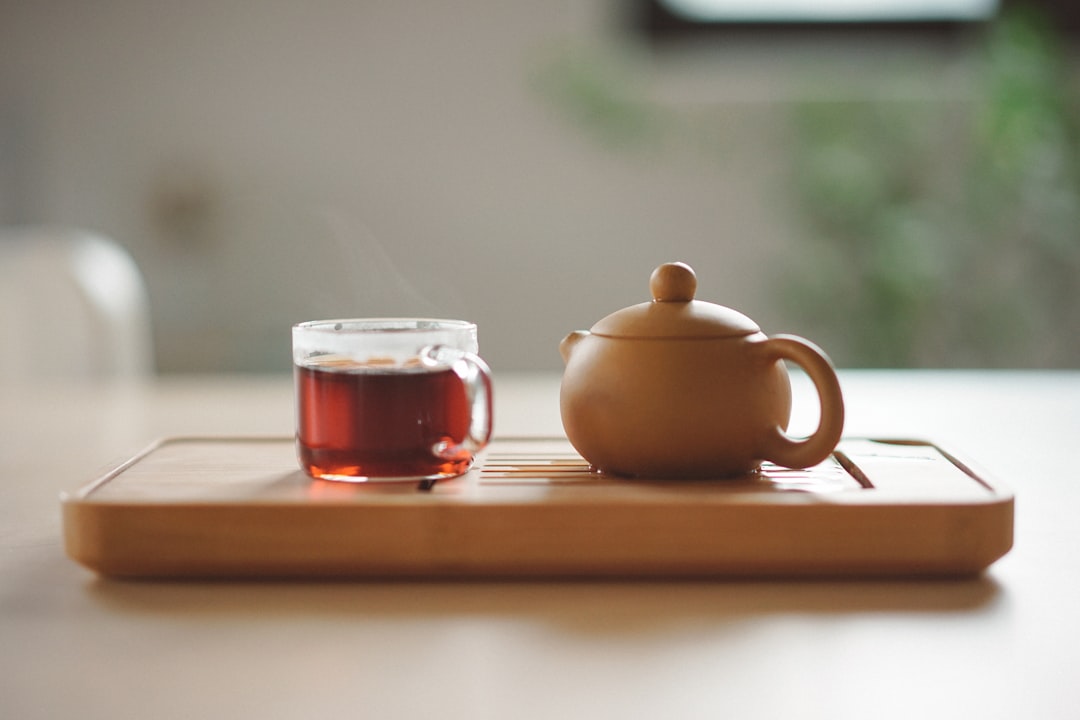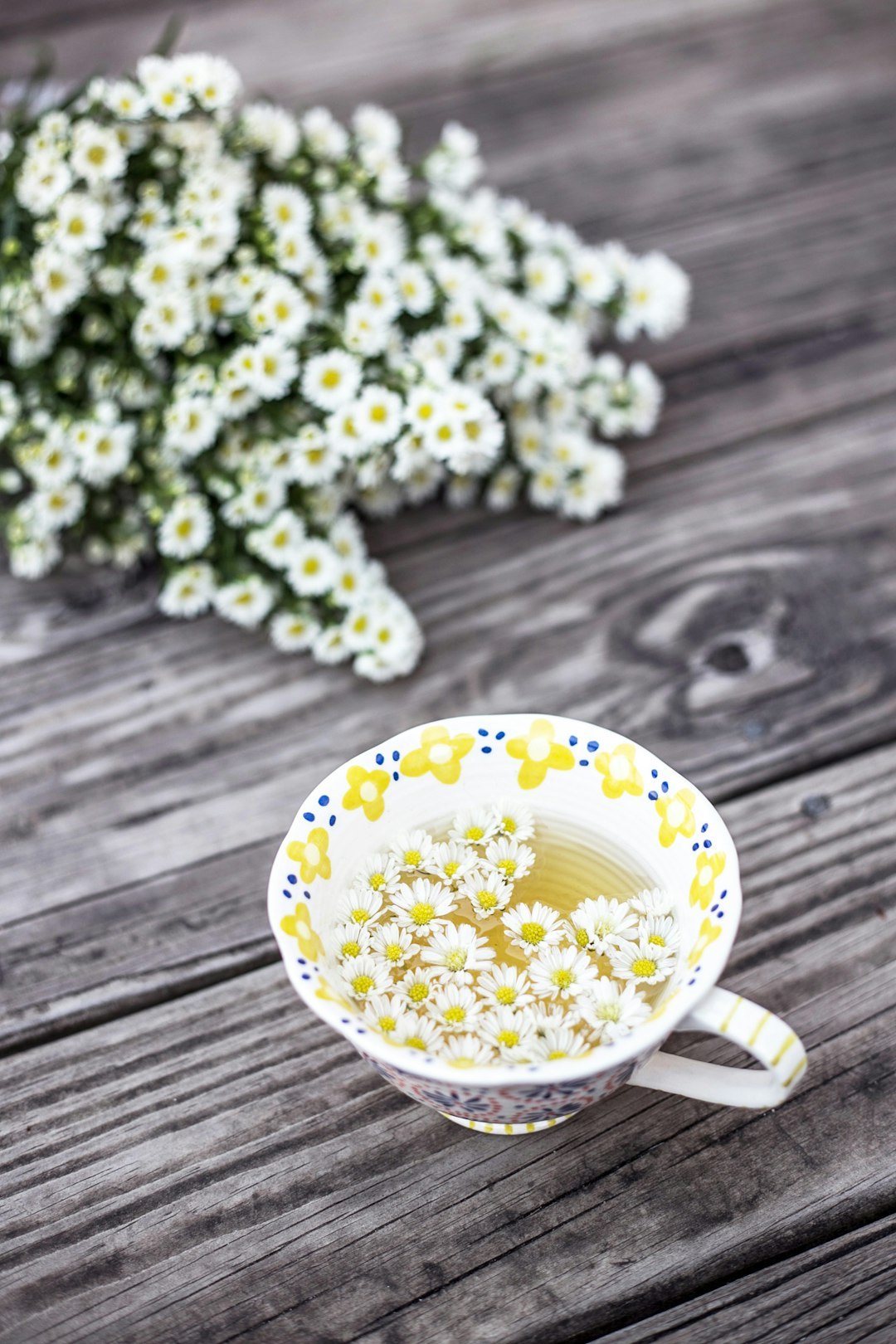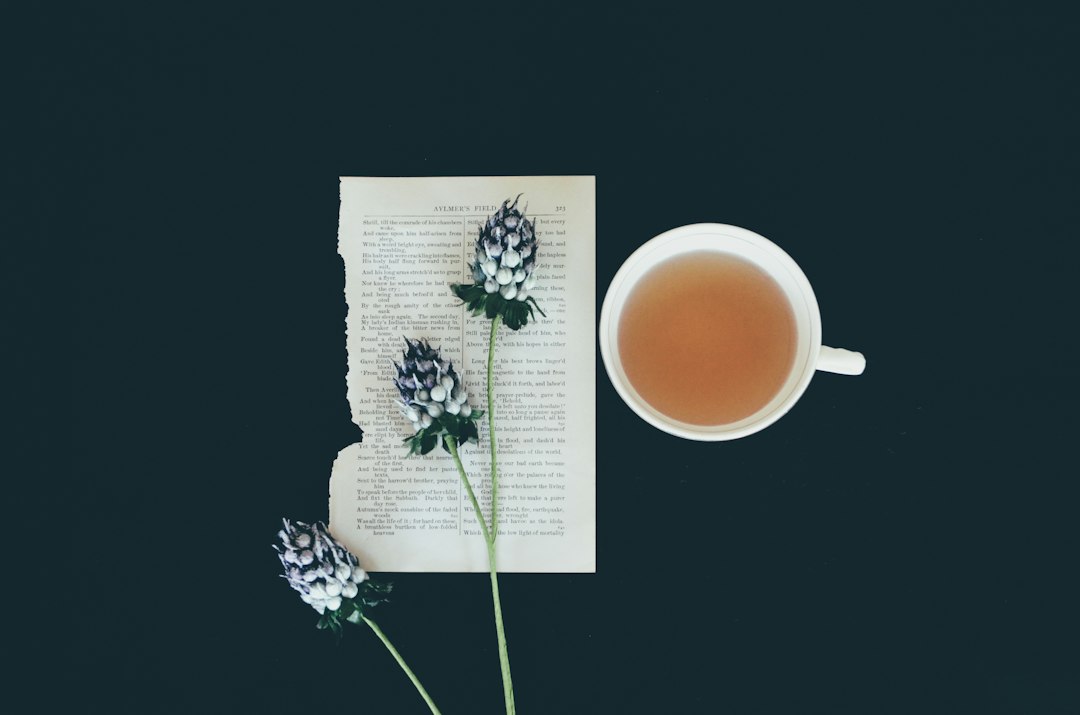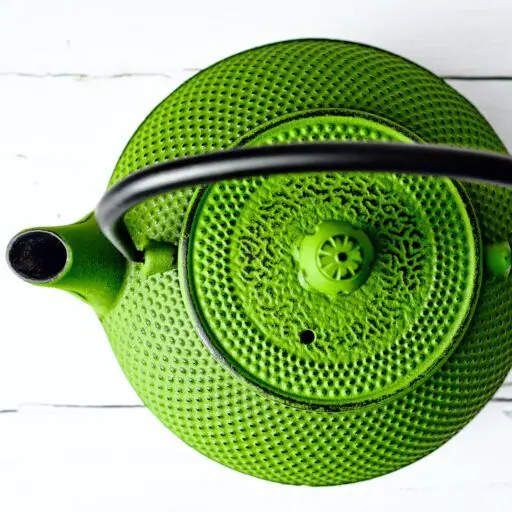Support our educational content for free when you purchase through links on our site. Learn more
Oolong Tea: Sip and Savor the Finest Brew! [2024] ☕
Quick Answer: Oolong tea is a traditional Chinese tea that undergoes withering, oxidation, curling, and twisting processes. It comes in various styles and flavors, ranging from sweet and fruity to woody and thick. Popular varieties include Wuyi Mountains, Anxi, and Taiwan oolong teas. Oolong tea contains caffeine, but the levels can vary. It is safe to drink oolong tea everyday, and it offers numerous health benefits. Oolong tea is a delightful and versatile beverage that tea enthusiasts should definitely explore!
Ah, oolong tea! Just the name itself evokes a sense of mystery and intrigue. If you’re a tea lover, you’ve probably heard of this traditional Chinese tea that sits somewhere between green and black tea on the oxidation spectrum. But what exactly is oolong tea, and what makes it so special? Join us as we dive into the world of oolong tea, exploring its origins, varieties, preparation methods, caffeine content, and more. Get ready to sip and savor the finest brew!
Table of Contents
- Quick Answer
- Quick Tips and Facts
- Background: The Captivating History of Oolong Tea
- Varieties: Exploring the Diverse Flavors of Oolong Tea
- Preparation: Unleashing the Perfect Brew
- Caffeine: The Buzz on Oolong Tea
- Health Benefits: Why Oolong Tea is a Healthy Choice
- Teaghrelins: The Unique Compounds in Oolong Tea
- FAQ
- Conclusion
- Recommended Links
- Reference Links
Quick Tips and Facts
Before we dive into the captivating world of oolong tea, here are some quick tips and facts to get you started:
✅ Oolong tea is a traditional Chinese tea that undergoes withering, oxidation, curling, and twisting processes.
✅ It falls between green and black tea on the oxidation spectrum, with oxidation levels ranging from 8% to 85%.
✅ Oolong tea is popular in southeastern China and among ethnic Chinese in Southeast Asia.
✅ Different styles of oolong tea can vary widely in flavor, from sweet and fruity to woody and thick.
✅ Notable varieties include Wuyi Mountains, Anxi, and Taiwan oolong teas.
✅ Recommended brewing techniques vary, with common methods like gaiwan or Yixing clay teapot.
✅ Oolong tea contains caffeine, but the levels can vary based on factors like terroir and production processes.
✅ Drinking oolong tea everyday is safe and offers numerous health benefits.
Now that you have a taste of what oolong tea is all about, let’s delve deeper into its captivating history!
Background: The Captivating History of Oolong Tea

Oolong tea has a rich and captivating history that dates back centuries. Legend has it that oolong tea was discovered by a tea farmer who was distracted by a deer while picking tea leaves. When he returned, the leaves had started to oxidize, resulting in a unique flavor profile. This happy accident led to the birth of oolong tea!
Oolong tea originated in China, with its production techniques perfected over generations. The process involves withering the tea leaves under the sun, allowing them to partially oxidize. The leaves are then curled and twisted, giving oolong tea its distinctive appearance.
Varieties: Exploring the Diverse Flavors of Oolong Tea
One of the most exciting aspects of oolong tea is the wide range of flavors it offers. Let’s take a journey through the different varieties of oolong tea and discover their unique characteristics:
1. Fujian: The Essence of Tradition
Fujian province in China is renowned for producing some of the finest oolong teas. Within Fujian, two main regions stand out: the Wuyi Mountains and Anxi.
1.1 Wuyi Mountains: The Rock Stars of Oolong Tea
The Wuyi Mountains are home to some of the most famous oolong teas in the world. These teas are grown in mineral-rich soil and are known for their complex flavors and aromas. Here are some notable teas from the Wuyi Mountains:
- Da Hong Pao: This legendary tea is often referred to as the “King of Rock Tea” and is highly prized for its rich, roasted flavor.
- Shui Jin Gui: With its golden liquor and floral aroma, Shui Jin Gui is a delight for the senses.
- Tieluohan: This tea is named after the Iron Arhat, a legendary Buddhist figure. It offers a unique combination of fruity and mineral notes.
- Bai Jiguan: Known as the “White Cockscomb,” this tea has a delicate flavor with hints of honey and flowers.
- Rougui: Rougui oolong tea is famous for its cinnamon-like aroma and warm, spicy taste.
- Shui Xian: With its deep, roasted flavor and sweet aftertaste, Shui Xian is a favorite among oolong enthusiasts.
1.2 Anxi: The Birthplace of Tieguanyin
Anxi is another region in Fujian that produces exceptional oolong teas. The most famous tea from Anxi is Tieguanyin, also known as Iron Goddess of Mercy. This tea is known for its floral aroma, smooth texture, and lingering aftertaste. Tieguanyin is a true gem in the world of oolong tea.
2. Guangdong: A Symphony of Flavors
Guangdong province in China is known for its unique style of oolong tea known as Single Bush Dancong, or Phoenix oolong. These teas are named after the specific plant cultivars they come from and are famous for imitating the flavors of flowers and fruits. Each Dancong tea has its own distinct character, offering a symphony of flavors to explore.
3. Taiwan: The Island of Oolong Delights
Taiwan has gained recognition for its exceptional oolong teas, thanks to its ideal climate and unique terroir. Here are some notable teas from Taiwan:
- Dong Ding: This tea is grown in the Dong Ding Mountain region and is known for its roasted flavor and smooth texture.
- Dongfang Meiren: Also known as Oriental Beauty, this tea is famous for its sweet, honey-like taste and complex aroma.
- Alishan: Grown in the Alishan Mountain region, this tea offers a delicate, floral flavor and a refreshing aftertaste.
- Lishan: Lishan oolong tea is prized for its high elevation cultivation, resulting in a unique flavor profile with hints of fruit and flowers.
- Baozhong: Baozhong tea is lightly oxidized, offering a fresh and floral taste that is perfect for those who prefer a lighter oolong.
- Jin Xuan: Known as “Milk Oolong,” this tea has a creamy, buttery taste and a smooth texture.
- Tieguanyin: While Tieguanyin is traditionally associated with Anxi, Taiwan also produces its own version of this beloved tea. Taiwanese Tieguanyin has a unique character, with a more floral and fruity profile compared to its Chinese counterpart.
- Sijichun Oolong: Sijichun, also known as Four Seasons Spring, is a popular everyday oolong tea in Taiwan. It offers a refreshing and mellow flavor that can be enjoyed throughout the day.
4. Other Varieties: Exploring Beyond Borders
Oolong tea is not limited to China and Taiwan. Other regions have also embraced this delightful beverage and put their own spin on it. Here are a few notable oolong teas from around the world:
- Darjeeling Oolong: Darjeeling, known for its black teas, also produces a limited quantity of oolong teas. These teas offer a unique combination of the floral notes of Darjeeling with the characteristics of oolong tea.
- Assam Smoked Oolong: Assam, famous for its robust black teas, surprises us with a smoked oolong that combines the rich flavors of Assam with a smoky twist.
- Vietnamese Oolong: Vietnam has a long history of tea cultivation, and its oolong teas are gaining recognition for their unique flavors and aromas.
Preparation: Unleashing the Perfect Brew
Now that you’re familiar with the captivating flavors of oolong tea, let’s explore the best ways to prepare this delightful beverage. While there are no hard and fast rules, here are some popular brewing techniques to help you unleash the perfect brew:
- Gaiwan: The gaiwan is a traditional Chinese brewing vessel consisting of a lidded bowl and saucer. It allows you to appreciate the beauty of the tea leaves as they unfurl and infuse the water with their flavors.
- Yixing Clay Teapot: Yixing clay teapots are highly regarded for their ability to enhance the flavors of tea. They are often used for brewing oolong tea, allowing the tea to develop its full potential.
- Gongfu Method: The gongfu method involves multiple short steepings, allowing you to savor the evolving flavors of oolong tea. This method is particularly popular for high-quality oolong teas.
- Water Temperature: The ideal water temperature for brewing oolong tea ranges from 80–95°C (176–203°F). Experiment with different temperatures to find the one that brings out the best flavors in your tea.
Remember, brewing tea is an art, and the best way to find your perfect brew is through experimentation and exploration. So grab your favorite brewing vessel and let the tea leaves dance!
Caffeine: The Buzz on Oolong Tea
If you’re wondering about the caffeine content in oolong tea, we’ve got you covered. Oolong tea does contain caffeine, but the levels can vary based on factors like terroir and production processes. On average, a cup of oolong tea contains about 30-50 milligrams of caffeine, which is less than a cup of coffee but more than a cup of green tea.
The caffeine in oolong tea offers a gentle pick-me-up without the jitters often associated with coffee. It provides a balanced and sustained energy boost, making it a perfect choice for those looking for a midday lift or a refreshing morning beverage.
Health Benefits: Why Oolong Tea is a Healthy Choice
Beyond its delightful flavors, oolong tea offers numerous health benefits. Here are some reasons why oolong tea is a healthy choice:
✅ Antioxidant Powerhouse: Oolong tea is rich in antioxidants, which help protect the body against free radicals and oxidative stress.
✅ Weight Management: Oolong tea has been shown to boost metabolism and aid in weight management. It can help increase fat oxidation and promote the breakdown of stored fat.
✅ Heart Health: Regular consumption of oolong tea has been linked to a reduced risk of heart disease. It may help lower blood pressure and cholesterol levels.
✅ Digestive Health: Oolong tea has been traditionally used to aid digestion and promote a healthy gut. It can help alleviate digestive issues and improve overall gut health.
✅ Mental Alertness: The combination of caffeine and L-theanine in oolong tea can enhance mental alertness and focus, without the jitters often associated with caffeine.
✅ Skin Health: The antioxidants in oolong tea can help promote healthy skin by reducing inflammation and protecting against UV damage.
Remember, while oolong tea offers numerous health benefits, it is not a magical cure-all. It is always important to maintain a balanced diet and a healthy lifestyle for overall well-being.
Teaghrelins: The Unique Compounds in Oolong Tea
One of the fascinating aspects of oolong tea is the presence of teaghrelins, acylated flavonoid tetraglycosides that bind to ghrelin receptors. These compounds have been found to have potential health benefits, including appetite regulation and weight management. While more research is needed to fully understand the effects of teaghrelins, they add to the allure of oolong tea.
FAQ

What is special about oolong tea?
Oolong tea is special because of its unique production process, which involves withering, oxidation, curling, and twisting. This process gives oolong tea its distinctive flavors and aromas, ranging from sweet and fruity to woody and thick. The wide variety of oolong teas available allows tea enthusiasts to explore a diverse range of flavors and experiences.
Read more about “Types of Tea Leaves: A Comprehensive Guide … 🍵”
Is it safe to drink oolong tea everyday?
Yes, it is safe to drink oolong tea everyday. Oolong tea is a natural beverage that offers numerous health benefits. However, it is important to consume oolong tea in moderation as part of a balanced diet and a healthy lifestyle.
Read more about “Is it OK if I drink tea everyday? … ☕”
Does oolong tea have a lot of caffeine?
Oolong tea does contain caffeine, but the levels can vary based on factors like terroir and production processes. On average, a cup of oolong tea contains about 30-50 milligrams of caffeine, which is less than a cup of coffee but more than a cup of green tea. The caffeine in oolong tea provides a gentle pick-me-up without the jitters often associated with coffee.
Read more about “The Best Tea Producer in the World … 🌍”
Is oolong tea more healthy than green tea?
Both oolong tea and green tea offer numerous health benefits. While they come from the same plant, Camellia sinensis, they undergo different processing methods, resulting in distinct flavors and characteristics. Oolong tea is partially oxidized, while green tea is unoxidized. The health benefits of oolong tea and green tea are similar, but they may vary slightly due to differences in processing. Ultimately, the choice between oolong tea and green tea comes down to personal preference.
Read more about “What is the Most Popular Tea in the World? … 🍵”
Conclusion

Oolong tea is a delightful and versatile beverage that offers a world of flavors and experiences. From the rich and roasted teas of the Wuyi Mountains to the floral and fruity teas of Taiwan, there is an oolong tea for every palate. Whether you’re a tea connoisseur or just starting your tea journey, oolong tea is definitely worth exploring.
So go ahead, brew yourself a cup of oolong tea and savor the intricate flavors and aromas. Whether you prefer it hot or iced, oolong tea is sure to captivate your taste buds and leave you craving for more. Cheers to the wonderful world of oolong tea!
Recommended Links
- Tea Brand Spotlights: Discover the finest tea brands and explore their unique offerings.
- Tea Brand Guides: Dive deep into the world of tea with our comprehensive brand guides.
- Health Benefits of Tea: Learn about the amazing health benefits that tea has to offer.
- Tea Culture and History: Immerse yourself in the rich culture and history of tea.
- Tea Education and Tips: Expand your tea knowledge with our educational articles and helpful tips.
Looking for more information on different types of tea? Check out our comprehensive guide on Types of Tea Leaves: A Comprehensive Guide 2024. 🍵
Reference Links
- Oolong – Wikipedia: Learn more about oolong tea on Wikipedia.
- Wuyi Mountains: Explore the fascinating world of Wuyi Mountains oolong tea.
- Anxi Tieguanyin: Discover the beauty of Anxi Tieguanyin oolong tea.
- Phoenix Dancong: Immerse yourself in the flavors of Guangdong’s Phoenix oolong tea.
- Taiwanese Oolong Tea: Learn about the diverse and delicious oolong teas from Taiwan.

